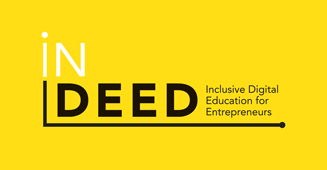5.4 Barriers to Digital Inclusion and Policies Implemented
The evidence shows a ‘digital divide’ is driven by four main factors: geography, age educational status, and income.
However, access to ICTs is only one component of digital inclusion. Equally, the ICT usage capability (acquisition of the necessary digital and media competencies required to use ICTs effectively) and quality of use (the opportunities available to people to apply these competencies in ways that add value to their lives) influence the disparities in digital literacy among society. Significant numbers of people remain at the margins of the ‘knowledge society.
Key obstacles can be identified such as cost; peer pressure; social context; difficulties accessing computers; a lack of relevance of computer technology to daily lives (Facer and Selwyn, 2007).
Similarly, social media has created additional problems for excluded and at-risk people, for example, people with disabilities; immigrants, and people from ethnic minorities (Redeker 2008).
Policy Context in the EU
In response to this situation, policy measures have tried to reduce the ‘digital divide as well as address the processes of ‘dual exclusion’ through which social exclusion generally is reinforced by digital exclusion. Every day, we use the digital world to perform a range of tasks. This has only increased with the COVID-19 pandemic. We use the Internet and new technologies to work from our homes, learn new skills, watch tv and films, and find out the latest news with the click of a button. Digital inclusion is an EU-wide effort to ensure that everybody can contribute to and benefit from the digital world.
Indeed, the transition to the digital world has brought us many new and exciting opportunities. However, not everyone has equal access to these opportunities. For some people, the digital world is not yet fully accessible. For others, it is not affordable. And others were not taught the skills to participate fully.
The EU is working to make the Internet more accessible. It has introduced activities such as:
- accessible ICT: making ICT more accessible for all and fostering the development of accessible technologies.
- assistive technologies: supporting the development of ICT that assists people with disabilities in the digital world.
- skills and digital skills: empowering citizens to fight marginalisation and social exclusion, including in careers, through ICT in Education.
- social inclusion: increasing the participation rate of disadvantaged people in public, social and economic activities through social inclusion projects.
Another barrier to online participation is language. There are 24 official languages of the EU and more than 60 regional and minority languages. No single language can address all EU citizens at once, and the Internet must reflect this.
The EU is taking action to promote multilingualism online. It has invested over €200 million in this area over the last decade. It also launched the Connecting Europe Facility, which has an e-Translation service providing multilingual support to digital services and public administration across the EU.
The EU is fostering digital inclusion through other policy areas, such as digital skills, active and assistive living, and social inclusion.
